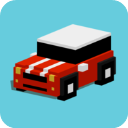如何在 JavaScript 中实现拖放
时间:2008-05-02 来源:tiger_big
JavaScript擅长于修改页面中的DOM元素,但是我们使用JavaScript通常只是实现一些简单功能,例如实现图片的翻转,网页中的标签页,等等。这篇文章将向你展示如何在页面中,对创建的元素实现拖放。
有许多理由让你在页面中加入拖放的功能,其中最简单的理由是重新组织数据。举个例子,你可能希望用户能够重组一系列的页面元素,通过放置一个input或
select组件在各个元素的旁边来代表它们的顺序是一种解决方案,使该组元素可以被拖放是一种替代方案。或者也许你想在网站上拥有一个可以被用户移动的
导航窗口。这些都是使用拖放功能的简单理由,因为你能够实现!
在你的网页上实现拖放的效果并不是很复杂。首先,我们知道鼠标的位置,然后我们需要了解用户什么时候点击一个元素,以至于我们知道要准备开始拖动它,最后我们要移动这个元素。
捕获鼠标的移动
第一步,我们需要获取鼠标的坐标,通过一个函数并赋给document.onmousemove可以实现这一功能:
Java代码
- function mouseMove(ev) {
- ev = ev || window.event;
- var mousePos = mouseCoords(ev);
- }
- function mouseCoords(ev) {
- if(ev.pageX || ev.pageY) {
- return {x:ev.pageX, y:ev.pageY};
- }
- return {
- x:ev.clientX + document.body.scrollLeft - document.body.clientLeft,
- y:ev.clientY + document.body.scrollTop - document.body.clientTop
- };
- } document.onmousemove = mouseMove;
function mouseMove(ev) {
ev = ev || window.event;
var mousePos = mouseCoords(ev);
}
function mouseCoords(ev) {
if(ev.pageX || ev.pageY) {
return {x:ev.pageX, y:ev.pageY};
}
return {
x:ev.clientX + document.body.scrollLeft - document.body.clientLeft,
y:ev.clientY + document.body.scrollTop - document.body.clientTop
};
}
首先我们需要解释一下event对象。不论你什么时候移动、点击鼠标,或按键,等等,一个事件都会发生。在IE中,这个事件是全局的,它被存储在
window.event中,对于Firefox,及其他的浏览器来说,这个事件将被传递到任何指向这个页面动作的函数中。因此,我们使
document.onmousemove指向鼠标移动的函数,鼠标移动的函数获得事件对象。
上述代码中,ev在所有浏览器环境中都包含了event对象。在Firefox里,"||window.event"将被忽略,因为它已经包含事件。在IE中,ev的值为空,以至于需要将它的值设置为window.event。
本文中我们需要多次捕获到鼠标的坐标,因此我们写了一个mouseCoords方法,它有一个参数:event。
我们要再次讨论IE和其他浏览器之间的差异。Firefox和其他的浏览器使用event.pageX和event.pageY来表示鼠标相对于
document文档的位置。如果你有一个500*500的窗口,并且鼠标位于窗口中间,那么pageX和pageY的值将都是250。如果你将窗口向下
滚动500象素,pageY的值为750。
如此相反的是,微软的IE使用event.clientX和event.clientY来表示鼠标相对于window窗口的位置,而不是当前
document文档。在相同的例子中,如果将鼠标放置于500*500窗口的中间,clientX和clientY值将均为250。如果向下滚动页面,
clientY将仍为250,因为它是相对于window窗口来测量,而不是当前的document文档。因此,在鼠标位置中,我们应该引入
document文档body区域的scrollLeft和scrollTop属性。最后,IE中document文档实际并不在(0,0)的位置,在它
周围有一个小(通常有2px)边框,document.body.clientLeft和document.body.clientTop包含了这个边框
的宽度,从而还需要在鼠标位置中引入它们。
幸运的是,现在我们拥有了mouseCoords函数,不用再为获取鼠标位置担心了。
捕获鼠标的点击
下一步,我们必须知道鼠标何时点击及何时释放。如果我们跳过这一步,只要你的鼠标移动经过这些元素时,都将产生拖动这些元素的效果,这是令人讨厌并违反人的直觉的。
在这里,有两个函数可以帮助我们:onmousedown和onmouseup。先前我们已将document.onmousemove指向一个函数,因
此从逻辑上似乎应该使document.onmousedown和document.onmouseup都指向函数。如果我们让
document.onmousedown指向一个函数,那么这个函数将会因为鼠标点击任何元素而执行:文本、图像、表格,等等。我们只想页面中特定的元
素具有被拖放的功能,因此,我们可以通过如下方法实现:
Java代码
- document.onmouseup = mouseUp;
- var dragObject = null;
- function makeClickable(object) {
- object.onmousedown = function() {
- dragObject = this;
- }
- }
- function mouseUp(ev) {
- dragObject = null;
- } document.onmouseup = mouseUp;
var dragObject = null;
function makeClickable(object) {
object.onmousedown = function() {
dragObject = this;
}
}
function mouseUp(ev) {
dragObject = null;
}
我们现在有了一个变量dragObject,包含了你点击的任何元素。当你释放鼠标的时候,dragObject被设置为空,从而在dragObject非空的时候,我们需要进行拖动操作。
移动元素
我们现在已经知道如何捕获鼠标移动和点击。接下来需要做的就是移动任何我们想拖动的元素。首先,将一个元素准确移动到页面上我们想要的位置,该元素样式表
的position值必须为absolute,这意味着你可以设置它的style.top或style.left,测量值相对于页面的左上角,因为我们所
有的鼠标移动都是相对于页面左上角的,通常都是这样。
一旦我们设置了item.style.position='absolute',接下来就需要改变该元素top和left的位置,使它移动!
Java代码
- document.onmousemove = mouseMove;
- document.onmouseup = mouseUp;
- var dragObject = null ;
- var mouseOffset = null ;
- function getMouseOffset(target, ev) {
- ev = ev || window.event;
- var docPos = getPosition(target);
- var mousePos = mouseCoords(ev);
- return {x:mousePos.x - docPos.x, y:mousePos.y - docPos.y} ;
- }
- function getPosition(e) {
- var left = 0;
- var top = 0;
- while (e.offsetParent) {
- left += e.offsetLeft;
- top += e.offsetTop;
- e = e.offsetParent;
- }
- left += e.offsetLeft;
- top += e.offsetTop;
- return {x:left, y:top} ;
- }
- function mouseMove(ev) {
- ev = ev || window.event;
- var mousePos = mouseCoords(ev);
- if (dragObject) {
- dragObject.style.position = 'absolute';
- dragObject.style.top = mousePos.y - mouseOffset.y;
- dragObject.style.left = mousePos.x - mouseOffset.x;
- return false ;
- }
- }
- function mouseUp() {
- dragObject = null ;
- }
- function makeDraggable(item) {
- if (!item) return ;
- item.onmousedown = function (ev) {
- dragObject = this ;
- mouseOffset = getMouseOffset(this, ev);
- return false ;
- }
- } document.onmousemove = mouseMove;
document.onmouseup = mouseUp;
var dragObject = null ;
var mouseOffset = null ;
function getMouseOffset(target, ev) {
ev = ev || window.event;
var docPos = getPosition(target);
var mousePos = mouseCoords(ev);
return {x:mousePos.x - docPos.x, y:mousePos.y - docPos.y} ;
}
function getPosition(e) {
var left = 0;
var top = 0;
while (e.offsetParent) {
left += e.offsetLeft;
top += e.offsetTop;
e = e.offsetParent;
}
left += e.offsetLeft;
top += e.offsetTop;
return {x:left, y:top} ;
}
function mouseMove(ev) {
ev = ev || window.event;
var mousePos = mouseCoords(ev);
if (dragObject) {
dragObject.style.position = 'absolute';
dragObject.style.top = mousePos.y - mouseOffset.y;
dragObject.style.left = mousePos.x - mouseOffset.x;
return false ;
}
}
function mouseUp() {
dragObject = null ;
}
function makeDraggable(item) {
if (!item) return ;
item.onmousedown = function (ev) {
dragObject = this ;
mouseOffset = getMouseOffset(this, ev);
return false ;
}
}
你会注意到这些代码是以我们前面的例子为基础的(参考上篇文章),将它们放置在一起,你将能够随意的去移动元素。
当我们点击一个元素时,存储了另外的一个变量,mouseOffset。mouseOffset简单的包含了我们点击元素的位置信息。如果我们有一张
20*20px的图像,然后点击图像的中间,mouseOffset应该是{x:10,
y:10}。如果我们点击图像的左上角,mouseOffset应为{x:0,
y:0}。我们在鼠标移动后的位置信息中用到它。如果我们没有存储这个值,不论你点击元素的哪一个位置,元素相对于鼠标的位置都将会是相同的。
mouseOffset函数用到了另外一个函数getPosition。getPosition目的是返回元素相对于documemt文档的坐标位置。如
果我们简单的去读取item.offsetLeft或item.style.left,得到的将是元素相对于它父元素的位置,而不是document文档
的。在我们的脚本中,所有的元素都是相对于document文档的,因此需要这样做。
要完成获取元素相对于document文档位置的工作,getPosition从它自身的父级开始,循环获取它的left和top的值并累加,这样我们就得到了我们想要的元素距文档顶部和左侧的累计值。
当我们获取了这条信息并移动鼠标的时候,mouseMove开始运行。首先我们需要保证item.style.position值为absolute,接
着,我们将元素移动到任何一个地方,鼠标位置都会减去我们之前记录的鼠标相对于元素的偏移量。当鼠标释放时,dragObject将被设置为null,并
且mouseMove函数不再做任何事情。
放置元素
我们前面的例子已经处理了这个问题,仅仅是拖动一个元素,然后将它放下。然后,在我们放下元素的时候通常还有其他的目的,我们以拖动元素到垃圾回收站为例,或我们可能想让该元素和页面中某个特定的区域对齐。
不幸的是我们在这里进入了一个相对主要的问题。因为我们正在移动的元素总是直接处于我们的鼠标下,而不可能去引发mouseover、
mousedown、mouseup或鼠标对页面中其他元素的操作。如果你移动一个元素到垃圾回收站,你的鼠标会一直在移动元素的上方,而不是垃圾回收
站。
那么我们该如何处理这个问题呢?这里有几种解决方案。在前面所提到的mouseOffset的目的是保证元素总是在鼠标下方正确的位置,如果你忽视了这
点,然后总是使得元素在鼠标的右下方,你的鼠标将不会被你正在拖动的元素所隐藏,我们也不会碰到问题。但事实上往往不会这样,为了美观我们通常要保持元素
在鼠标的下方。
另外一种选择是不移动你正在拖动的元素,你可以改变鼠标样式,来告诉使用者你正在拖动一个元素,直到你将它放置到某个地方。这解决了我们的问题,但是带来了和前面一种方案面临的同样问题:美观。
我们最后的一种解决方案既不影响你正在移动的元素,也不影响移动终点位置上的元素(例如垃圾回收站)。不幸的是,这比前面两种解决方案的难度更大。我们将
要做的是获得一组我们要放置的目标,当鼠标释放时,我们手工检查当前鼠标相对于每个目标的位置,看鼠标是否释放在这个目标中某一个目标的位置上,如果是
的,我们就知道我们已经将元素放置在我们的目标上了。
Java代码
- /**/ /*
- All code from the previous example is needed with the exception
- of the mouseUp function which is replaced below
- */
- var dropTargets = [];
- function addDropTarget(dropTarget) {
- dropTargets.push(dropTarget);
- }
- function mouseUp(ev) {
- ev = ev || window.event;
- var mousePos = mouseCoords(ev);
- for (var i = 0; i
- var curTarget = dropTargets;
- var targPos = getPosition(curTarget);
- var targWidth = parseInt(curTarget.offsetWidth);
- var targHeight = parseInt(curTarget.offsetHeight);
- if (
- (mousePos.x > targPos.x) &&
- (mousePos.
- (mousePos.y > targPos.y) &&
- (mousePos.y
- // dragObject was dropped onto curTarget!
- }
- }
- dragObject = null ;
- } /**/ /*
All code from the previous example is needed with the exception
of the mouseUp function which is replaced below
*/
var dropTargets = [];
function addDropTarget(dropTarget) {
dropTargets.push(dropTarget);
}
function mouseUp(ev) {
ev = ev || window.event;
var mousePos = mouseCoords(ev);
for (var i = 0; i targPos.x) &&
(mousePos. targPos.y) &&
(mousePos.y
这个例子中当鼠标释放时,我们循环每个可能放置元素的目标,如果鼠标指针在目标上,我们则拥有了一个放置元素的事件,通过鼠标横坐标大于目标元素左侧横坐
标(mousePos.x>targPos.x),小于目标元素右侧横坐标(mousePos.xJava代码
- // iMouseDown represents the current mouse button state: up or down
- /**//*
- lMouseState represents the previous mouse button state so that we can
- check for button clicks and button releases:
- if(iMouseDown && !lMouseState) // button just clicked!
- if(!iMouseDown && lMouseState) // button just released!
- */
- var mouseOffset = null;
- var iMouseDown = false;
- var lMouseState = false;
- var dragObject = null;
- // Demo 0 variables
- var DragDrops = [];
- var curTarget = null;
- var lastTarget = null;
- var dragHelper = null;
- var tempDiv = null;
- var rootParent = null;
- var rootSibling = null;
- Number.prototype.NaN0=function(){return isNaN(this)?0:this;}
- function CreateDragContainer(){
- /**//*
- Create a new "Container Instance" so that items from one "Set" can not
- be dragged into items from another "Set"
- */
- var cDrag = DragDrops.length;
- DragDrops[cDrag] = [];
- /**//*
- Each item passed to this function should be a "container". Store each
- of these items in our current container
- */
- for(var i=0; i
- var cObj = arguments;
- DragDrops[cDrag].push(cObj);
- cObj.setAttribute('DropObj', cDrag);
- /**//*
- Every top level item in these containers should be draggable. Do this
- by setting the DragObj attribute on each item and then later checking
- this attribute in the mouseMove function
- */
- for(var j=0; j
- // Firefox puts in lots of #text nodesskip these
- if(cObj.childNodes[j].nodeName=='#text') continue;
- cObj.childNodes[j].setAttribute('DragObj', cDrag);
- }
- }
- }
- function mouseMove(ev){
- ev = ev || window.event;
- /**//*
- We are setting target to whatever item the mouse is currently on
- Firefox uses event.target here, MSIE uses event.srcElement
- */
- var target = ev.target || ev.srcElement;
- var mousePos = mouseCoords(ev);
- // mouseOut event - fires if the item the mouse is on has changed
- if(lastTarget && (target!==lastTarget)){
- // reset the classname for the target element
- var origClass = lastTarget.getAttribute('origClass');
- if(origClass) lastTarget.className = origClass;
- }
- /**//*
- dragObj is the grouping our item is in (set from the createDragContainer function).
- if the item is not in a grouping we ignore it since it can't be dragged with this
- script.
- */
- var dragObj = target.getAttribute('DragObj');
- // if the mouse was moved over an element that is draggable
- if(dragObj!=null){
- // mouseOver event - Change the item's class if necessary
- if(target!=lastTarget){
- var oClass = target.getAttribute('overClass');
- if(oClass){
- target.setAttribute('origClass', target.className);
- target.className = oClass;
- }
- }
- // if the user is just starting to drag the element
- if(iMouseDown && !lMouseState){
- // mouseDown target
- curTarget = target;
- // Record the mouse x and y offset for the element
- rootParent = curTarget.parentNode;
- rootSibling = curTarget.nextSibling;
- mouseOffset = getMouseOffset(target, ev);
- // We remove anything that is in our dragHelper DIV so we can put a new item in it.
- for(var i=0; i
- // Make a copy of the current item and put it in our drag helper.
- dragHelper.appendChild(curTarget.cloneNode(true));
- dragHelper.style.display = 'block';
- // set the class on our helper DIV if necessary
- var dragClass = curTarget.getAttribute('dragClass');
- if(dragClass){
- dragHelper.firstChild.className = dragClass;
- }
- // disable dragging from our helper DIV (it's already being dragged)
- dragHelper.firstChild.removeAttribute('DragObj');
- /**//*
- Record the current position of all drag/drop targets related
- to the element. We do this here so that we do not have to do
- it on the general mouse move event which fires when the mouse
- moves even 1 pixel. If we don't do this here the script
- would run much slower.
- */
- var dragConts = DragDrops[dragObj];
- /**//*
- first record the width/height of our drag item. Then hide it since
- it is going to (potentially) be moved out of its parent.
- */
- curTarget.setAttribute('startWidth', parseInt(curTarget.offsetWidth));
- curTarget.setAttribute('startHeight', parseInt(curTarget.offsetHeight));
- curTarget.style.display = 'none';
- // loop through each possible drop container
- for(var i=0; i
- with(dragConts){
- var pos = getPosition(dragConts);
- /**//*
- save the width, height and position of each container.
- Even though we are saving the width and height of each
- container back to the container this is much faster because
- we are saving the number and do not have to run through
- any calculations again. Also, offsetHeight and offsetWidth
- are both fairly slow. You would never normally notice any
- performance hit from these two functions but our code is
- going to be running hundreds of times each second so every
- little bit helps!
- Note that the biggest performance gain here, by far, comes
- from not having to run through the getPosition function
- hundreds of times.
- */
- setAttribute('startWidth', parseInt(offsetWidth));
- setAttribute('startHeight', parseInt(offsetHeight));
- setAttribute('startLeft', pos.x);
- setAttribute('startTop', pos.y);
- }
- // loop through each child element of each container
- for(var j=0; j
- with(dragConts.childNodes[j]){
- if((nodeName=='#text') || (dragConts.childNodes[j]==curTarget)) continue;
- var pos = getPosition(dragConts.childNodes[j]);
- // save the width, height and position of each element
- setAttribute('startWidth', parseInt(offsetWidth));
- setAttribute('startHeight', parseInt(offsetHeight));
- setAttribute('startLeft', pos.x);
- setAttribute('startTop', pos.y);
- }
- }
- }
- }
- }
- // If we get in here we are dragging something
- if(curTarget){
- // move our helper div to wherever the mouse is (adjusted by mouseOffset)
- dragHelper.style.top = mousePos.y - mouseOffset.y;
- dragHelper.style.left = mousePos.x - mouseOffset.x;
- var dragConts = DragDrops[curTarget.getAttribute('DragObj')];
- var activeCont = null;
- var xPos = mousePos.x - mouseOffset.x + (parseInt(curTarget.getAttribute('startWidth')) /2);
- var yPos = mousePos.y - mouseOffset.y + (parseInt(curTarget.getAttribute('startHeight'))/2);
- // check each drop container to see if our target object is "inside" the container
- for(var i=0; i
- with(dragConts){
- if(((getAttribute('startLeft'))
- ((getAttribute('startTop'))
- ((getAttribute('startLeft') + getAttribute('startWidth')) > xPos) &&
- ((getAttribute('startTop') + getAttribute('startHeight')) > yPos)){
- /**//*
- our target is inside of our container so save the container into
- the activeCont variable and then exit the loop since we no longer
- need to check the rest of the containers
- */
- activeCont = dragConts;
- // exit the for loop
- break;
- }
- }
- }
- // Our target object is in one of our containers. Check to see where our div belongs
- if(activeCont){
- // beforeNode will hold the first node AFTER where our div belongs
- var beforeNode = null;
- // loop through each child node (skipping text nodes).
- for(var i=activeCont.childNodes.length-1; i>=0; i--){
- with(activeCont.childNodes){
- if(nodeName=='#text') continue;
- // if the current item is "After" the item being dragged
- if(
- curTarget != activeCont.childNodes &&
- ((getAttribute('startLeft') + getAttribute('startWidth')) > xPos) &&
- ((getAttribute('startTop') + getAttribute('startHeight')) > yPos)){
- beforeNode = activeCont.childNodes;
- }
- }
- }
- // the item being dragged belongs before another item
- if(beforeNode){
- if(beforeNode!=curTarget.nextSibling){
- activeCont.insertBefore(curTarget, beforeNode);
- }
- // the item being dragged belongs at the end of the current container
- } else {
- if((curTarget.nextSibling) || (curTarget.parentNode!=activeCont)){
- activeCont.appendChild(curTarget);
- }
- }
- // make our drag item visible
- if(curTarget.style.display!=''){
- curTarget.style.display = '';
- }
- } else {
- // our drag item is not in a container, so hide it.
- if(curTarget.style.display!='none'){
- curTarget.style.display = 'none';
- }
- }
- }
- // track the current mouse state so we can compare against it next time
- lMouseState = iMouseDown;
- // mouseMove target
- lastTarget = target;
- // track the current mouse state so we can compare against it next time
- lMouseState = iMouseDown;
- // this helps prevent items on the page from being highlighted while dragging
- return false;
- }
- function mouseUp(ev){
- if(curTarget){
- // hide our helper object - it is no longer needed
- dragHelper.style.display = 'none';
- // if the drag item is invisible put it back where it was before moving it
- if(curTarget.style.display == 'none'){
- if(rootSibling){
- rootParent.insertBefore(curTarget, rootSibling);
- } else {
- rootParent.appendChild(curTarget);
- }
- }
- // make sure the drag item is visible
- curTarget.style.display = '';
- }
- curTarget = null;
- iMouseDown = false;
- }
- function mouseDown(){
- iMouseDown = true;
- if(lastTarget){
- return false;
- }
- }
- document.onmousemove = mouseMove;
- document.onmousedown = mouseDown;
- document.onmouseup = mouseUp;
- window.onload = function(){
- // Create our helper object that will show the item while dragging
- dragHelper = document.createElement('DIV');
- dragHelper.style.cssText = 'position:absolute;display:none;';
- CreateDragContainer(
- document.getElementById('DragContainer1'),
- document.getElementById('DragContainer2'),
- document.getElementById('DragContainer3')
- );
- document.body.appendChild(dragHelper);
- } // iMouseDown represents the current mouse button state: up or down
/**//*
lMouseState represents the previous mouse button state so that we can
check for button clicks and button releases:
if(iMouseDown && !lMouseState) // button just clicked!
if(!iMouseDown && lMouseState) // button just released!
*/
var mouseOffset = null;
var iMouseDown = false;
var lMouseState = false;
var dragObject = null;
// Demo 0 variables
var DragDrops = [];
var curTarget = null;
var lastTarget = null;
var dragHelper = null;
var tempDiv = null;
var rootParent = null;
var rootSibling = null;
Number.prototype.NaN0=function(){return isNaN(this)?0:this;}
function CreateDragContainer(){
/**//*
Create a new "Container Instance" so that items from one "Set" can not
be dragged into items from another "Set"
*/
var cDrag = DragDrops.length;
DragDrops[cDrag] = [];
/**//*
Each item passed to this function should be a "container". Store each
of these items in our current container
*/
for(var i=0; i xPos) &&
((getAttribute('startTop') + getAttribute('startHeight')) > yPos)){
/**//*
our target is inside of our container so save the container into
the activeCont variable and then exit the loop since we no longer
need to check the rest of the containers
*/
activeCont = dragConts;
// exit the for loop
break;
}
}
}
// Our target object is in one of our containers. Check to see where our div belongs
if(activeCont){
// beforeNode will hold the first node AFTER where our div belongs
var beforeNode = null;
// loop through each child node (skipping text nodes).
for(var i=activeCont.childNodes.length-1; i>=0; i--){
with(activeCont.childNodes){
if(nodeName=='#text') continue;
// if the current item is "After" the item being dragged
if(
curTarget != activeCont.childNodes &&
((getAttribute('startLeft') + getAttribute('startWidth')) > xPos) &&
((getAttribute('startTop') + getAttribute('startHeight')) > yPos)){
beforeNode = activeCont.childNodes;
}
}
}
// the item being dragged belongs before another item
if(beforeNode){
if(beforeNode!=curTarget.nextSibling){
activeCont.insertBefore(curTarget, beforeNode);
}
// the item being dragged belongs at the end of the current container
} else {
if((curTarget.nextSibling) || (curTarget.parentNode!=activeCont)){
activeCont.appendChild(curTarget);
}
}
// make our drag item visible
if(curTarget.style.display!=''){
curTarget.style.display = '';
}
} else {
// our drag item is not in a container, so hide it.
if(curTarget.style.display!='none'){
curTarget.style.display = 'none';
}
}
}
// track the current mouse state so we can compare against it next time
lMouseState = iMouseDown;
// mouseMove target
lastTarget = target;
// track the current mouse state so we can compare against it next time
lMouseState = iMouseDown;
// this helps prevent items on the page from being highlighted while dragging
return false;
}
function mouseUp(ev){
if(curTarget){
// hide our helper object - it is no longer needed
dragHelper.style.display = 'none';
// if the drag item is invisible put it back where it was before moving it
if(curTarget.style.display == 'none'){
if(rootSibling){
rootParent.insertBefore(curTarget, rootSibling);
} else {
rootParent.appendChild(curTarget);
}
}
// make sure the drag item is visible
curTarget.style.display = '';
}
curTarget = null;
iMouseDown = false;
}
function mouseDown(){
iMouseDown = true;
if(lastTarget){
return false;
}
}
document.onmousemove = mouseMove;
document.onmousedown = mouseDown;
document.onmouseup = mouseUp;
window.onload = function(){
// Create our helper object that will show the item while dragging
dragHelper = document.createElement('DIV');
dragHelper.style.cssText = 'position:absolute;display:none;';
CreateDragContainer(
document.getElementById('DragContainer1'),
document.getElementById('DragContainer2'),
document.getElementById('DragContainer3')
);
document.body.appendChild(dragHelper);
}
Java代码
- class are defined on each item -->
- class ="DragContainer" id="DragContainer1">
- class="DragBox" id="Item1" overClass="OverDragBox" dragClass="DragDragBox">Item #1
- class="DragBox" id="Item2" overClass="OverDragBox" dragClass="DragDragBox">Item #2
- class="DragBox" id="Item3" overClass="OverDragBox" dragClass="DragDragBox">Item #3
- class="DragBox" id="Item4" overClass="OverDragBox" dragClass="DragDragBox">Item #4
- class="DragContainer" id="DragContainer2" >
- class="DragBox" id="Item5" overClass="OverDragBox" dragClass="DragDragBox">Item #5
- class="DragBox" id="Item6" overClass="OverDragBox" dragClass="DragDragBox">Item #6
- class="DragBox" id="Item7" overClass="OverDragBox" dragClass="DragDragBox">Item #7
- class="DragBox" id="Item8" overClass="OverDragBox" dragClass="DragDragBox">Item #8
- class="DragContainer" id="DragContainer3">
- class="DragBox" id="Item9" overClass="OverDragBox" dragClass="DragDragBox">Item #9
- class="DragBox" id="Item10" overClass="OverDragBox" dragClass="DragDragBox">Item #10
- class="DragBox" id="Item11" overClass="OverDragBox" dragClass="DragDragBox">Item #11
- class="DragBox" id="Item12" overClass="OverDragBox" dragClass="DragDragBox">Item #12
-
Item #1
Item #2
Item #3
Item #4
Item #5
Item #6
Item #7
Item #8
Item #9
Item #10
Item #11
Item #12
关于作者
Mark Kahn是一位Web Developer、DBA。可以通过这个网址跟他联系:
http://www.jslibrary.org
原文链接:
http://www.webreference.com/programming/javascript/mk/column2/3.html
译文链接:
http://www.blogjava.net/flyingis/archive/2006/10/15/75277.html
相关阅读 更多 +










